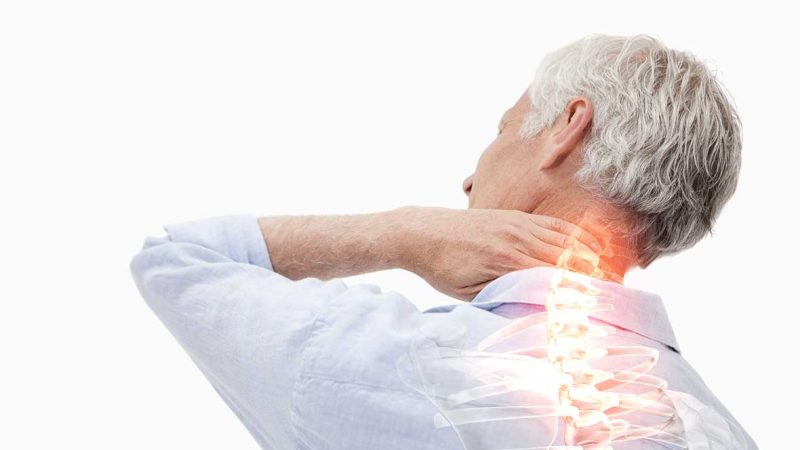Your back is one of the most critical parts of your body, supporting posture, movement, and daily functionality. But as we age, our back can start to show signs of wear and tear, leading to stiffness, pain, and reduced flexibility. This concept is often referred to as “back age”, which highlights the condition of your back relative to your actual age.
In this article, we’ll explore the concept of back age, its causes, and how to maintain a healthy and youthful back through proper care, exercise, and lifestyle adjustments.
What Is Back Age?
Back age refers to the biological age of your back compared to your chronological age. While someone may be 40 years old, their back could feel or function as if it’s much older—or younger—depending on factors like lifestyle, activity level, and spinal health.
Signs of an Aging Back
- Stiffness and Limited Mobility: Difficulty bending or twisting.
- Chronic Back Pain: Persistent pain, especially in the lower back.
- Reduced Strength: Weakness in the muscles supporting the spine.
- Postural Changes: Slouching or rounded shoulders.
Factors That Contribute to an Older Back Age
Your back age can advance faster than your actual age due to several factors:
Poor Posture
Sitting for long hours, slouching, or hunching over devices places strain on the spine, accelerating wear and tear.
Lack of Physical Activity
A sedentary lifestyle leads to muscle weakness, reduced flexibility, and increased stiffness in the back.
Improper Lifting Techniques
Lifting heavy objects without proper form can strain the back muscles and cause injuries.
Obesity
Excess weight puts added pressure on the spine, leading to faster degeneration of spinal discs and joints.
Aging and Degenerative Conditions
Natural aging processes, such as the thinning of spinal discs or arthritis, can contribute to an older back age.
How to Reduce Your Back Age
Keeping your back healthy and youthful requires consistent care and attention. Here are some practical tips to lower your back age:
Practice Good Posture
- At Work: Sit with your back straight, shoulders relaxed, and feet flat on the floor.
- While Standing: Distribute your weight evenly on both feet and avoid slouching.
Strengthen Your Back Muscles
Regular exercise helps maintain a strong and flexible back. Include the following exercises:
- Planks: Strengthen your core and support your spine.
- Bridges: Target lower back and glute muscles.
- Superman Exercise: Strengthen the entire back.
Stretch Regularly
Stretching improves flexibility and reduces stiffness:
- Cat-Cow Stretch: Loosens the spine and improves mobility.
- Child’s Pose: Relieves tension in the lower back.
- Hamstring Stretch: Prevents tightness that can affect the back.
Maintain a Healthy Weight
Losing excess weight reduces pressure on the spine, preventing premature aging of your back.
Use Proper Lifting Techniques
- Bend at your knees, not your waist.
- Keep the object close to your body as you lift.
- Avoid twisting while lifting.
Sleep Smart
- Use a supportive mattress and pillow that align your spine.
- Sleep on your back or side, not your stomach, to reduce strain.
Foods That Promote Back Health
Nutrition plays a role in keeping your spine healthy:
| Nutrient | Sources | Benefits |
| Calcium | Dairy, leafy greens, almonds | Strengthens bones and prevents fractures. |
| Vitamin D | Fatty fish, sunlight, fortified milk | Enhances calcium absorption for bone health. |
| Omega-3 Fatty Acids | Salmon, walnuts, flaxseeds | Reduces inflammation in spinal joints. |
| Protein | Lean meats, beans, tofu | Builds and repairs muscle tissue. |
Preventative Measures for a Healthy Back
- Stay Active: Regular physical activity prevents stiffness and promotes circulation to spinal tissues.
- Ergonomic Workspaces: Invest in a supportive chair and desk setup to encourage proper posture.
- Hydrate: Spinal discs rely on water to maintain their cushioning properties.
- Quit Smoking: Smoking reduces blood flow to the spine, accelerating degeneration.
When to Seek Medical Advice
While lifestyle changes can significantly improve back health, certain conditions may require professional intervention:
- Chronic Pain: Persistent pain lasting more than three months.
- Nerve Issues: Tingling, numbness, or weakness in the legs.
- Severe Stiffness: Limited mobility that affects daily activities.
Consult a healthcare professional if these symptoms occur. Treatment options may include physical therapy, medications, or surgery in severe cases.
Conclusion
Your back age is a reflection of how well you care for one of the most essential parts of your body. With the right lifestyle habits, exercises, and preventative measures, you can keep your back youthful, flexible, and pain-free for years to come.
Don’t wait to start taking care of your back—begin today and enjoy a healthier, more active life!
FAQs
1. What is back age?
Back age refers to the biological condition of your back compared to your chronological age.
2. How can I reduce my back age?
Maintain good posture, exercise regularly, eat a healthy diet, and avoid activities that strain the spine.
3. What exercises are best for back health?
Planks, bridges, superman exercises, and stretches like cat-cow pose are excellent for back health.
4. Can back age be reversed?
While aging processes can’t be stopped, proper care and lifestyle changes can significantly improve back health and functionality.
5. What are common signs of an older back age?
Chronic pain, stiffness, reduced flexibility, and poor posture are indicators of an aging back.
Also read: Disposal of Real Estate: A Complete Guide to Selling and Transferring Property









